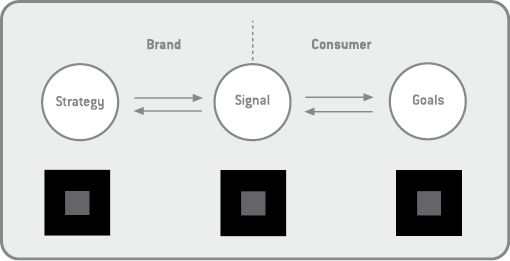6
From Positioning to Touchpoints
Bringing Value to Life
Closing the implementation gap
When we summarize what we have learned in the previous chapter, marketing appears, on the face of it, to be quite simple: we have to create a value proposition consisting of both explicit and implicit goals, link the implicit to the explicit goals, translate this proposition into signals which will activate mental concepts within the consumer, and then, if these mental concepts fit with the consumer’s active goal better than those activated by competitors, they will buy our brand or product (see Figure 6.1).
Figure 6.1 Implementation: translating strategy into signals that address consumer goals

That appears to be fairly straightforward, but we all know how challenging it is to develop a compelling strategy and to implement it across all touchpoints. It can take months, dozens of meetings and hundreds of hours to discuss the strategy alone. When it comes to implementing the strategy, the discussions become increasingly intense. Which creative idea will ...
Get Decoded: The Science Behind Why We Buy now with the O’Reilly learning platform.
O’Reilly members experience books, live events, courses curated by job role, and more from O’Reilly and nearly 200 top publishers.

